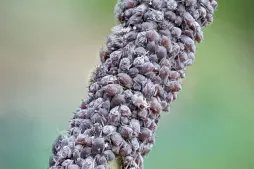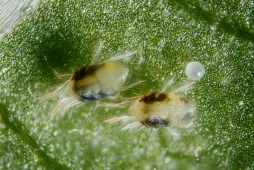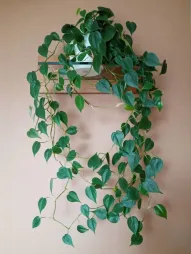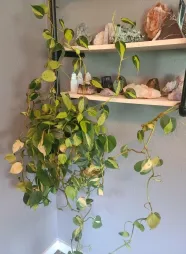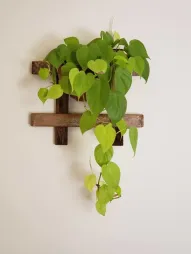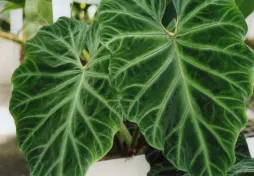Philodendron rugosum, a philodendron with textured leaves
Philodendron rugosum is sometimes called "Pigskin". This plant of the Araceae family, native to Colombia and Ecuador, owes its nickname to its thick, textured foliage.
How to recognize Philodendron rugosum?
Philodendron rugosum reaches a height of one meter and a spread of 70 centimeters. It is a perennial climber.
Like philodendron 'Silver Queen, the Philodendron rugosum clings to trees or stakes via aerial roots. These also enable it to capture moisture and nutrients from the air.
The dark-green, leathery, velvety leaves have a wavy surface. They are oval and cordate at the base.
The plant rarely flowers indoors. In its native rainforests, it produces an inflorescence consisting of a spadix surrounded by a spathe. Its color remains uncertain. According to some sources, the bloom is white, while others claim it takes on a reddish hue.
But everyone agrees that Philodenderon rugosum is a poisonous plant. Its sap contains calcium oxalate crystals, a substance that can cause digestive, neurological or cardiac problems when ingested. It can also cause allergic reactions if it comes into contact with the skin. Don't let your pets nibble your philodendron, and wear gloves when handling it.
Our maintenance tips
Philodendron rugosum enjoy part shade, regular watering and high humidity. If you have several, group them together to improve humidity!
Watering
Philodendron rugosum appreciate moderate, regular watering. Between two applications of water, leave the potting soil to dry out by two or three centimetres. Check this simply by touching the soil.
Always use water at room temperature to avoid thermal shock, which can damage the roots.
Be sure to remove any standing water in the saucer or planter.
Spray
If the air in your home is dry, spray the leaves of your plant with non-calcareous water at room temperature.
Repotting
In spring, transfer your Philodendron rugosum to a larger pot, so that it can continue to grow.
Obtain a pierced pot one size larger than the previous one. Line the bottom with clay balls or pebbles to promote drainage.
Pour in a layer of potting soil for green plants. Would you like to grow your Philodendron rugosum as a climber? Plant your stake. You can choose a model covered with sphagnum moss or coconut fibres, for example.
Plant your Philodendron rugosum and add some substrate. You can encourage your plant to cling to the stake by gently tying its stems to the post with wire. Water generously to encourage rooting.
If your indoor air is dry, place the pot on a dish filled with moist clay balls. This improves humidity.
Fertilization
You can stimulate the development of your plant during its growth phase, in spring and summer, with fertilizer.
If you want to speed up your plant's growth, feed your Philodendron rugosum with a green plant fertilizer.
Cleaning
Photosynthesis is slowed down by dust accumulating on the leaves. To help your Philodendron rugosum make the most of its exposure, clean the foliage with a clean, damp cloth.
Dusting also helps prevent pest attacks.
Prune
You don't have to prune your Philodendron rugosum. However, if the plant becomes too imposing, you can shorten the vines to control its dimensions.
Cut just above a node to encourage branching. Use a clean, sharp tool, such as scissors or pruning shears.
The plant is toxic. Wear gloves to protect yourself from its sap and avoid skin irritation.
The plant is toxic. Wear gloves to protect yourself from its sap and avoid skin irritation.
Pinch
Pinch your Philodendron rugosum during its growing season.
Philodendron rugosum are not plants to be pruned. If yours grows beyond the size of your living room, you can pinch off the end of the stem. The plant will stop growing vertically and produce new leaves at the base.
Don't forget that sap and leaves can cause irritation! Remember to wear gloves when handling your plant.
Don't forget that sap and leaves can cause irritation! Remember to wear gloves when handling your plant.
Cutting
Cutting is carried out during the strong growth phase, generally in spring and early summer.
Locate a healthy stem with at least three internodes. Cut it under one eye using a clean, sharp instrument. Remove the leaves at the base.
Obtain a perforated pot. Fill the bottom with potting soil for green plants.
Plant your cutting and fill with substrate. Tamp and water to remove air bubbles.
Diseases / Threats
Information
| Family | Araceae - Araceae |
| Type | Philodendron - Philodendron |
| Species | Philodendron rugosum - Philodendron rugosum |
| Lifecycle | Perennial |
| Foliage | Evergreen |
| Exposure | |
| Substrat | |
| Planting methods |
In pots In tubs |
| Categories | |
| Tags |
Fritillary Soiffarde Toxic |
| Origin |
South America |
| Hardiness (USDA) | 11a |
| Leaf color |
|
| Flower colors |
|
Discover plants from the same family















